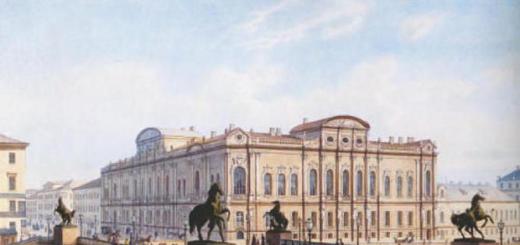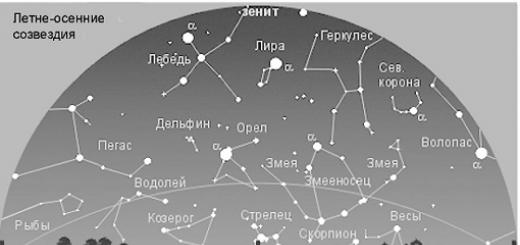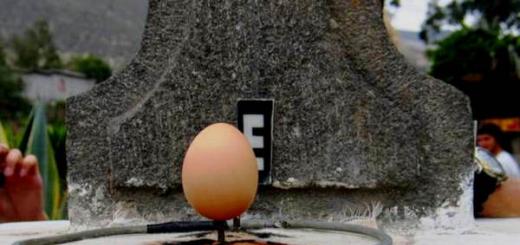Bridge draw
The Palace Bridge is a unique architectural structure created many years ago. To this day it is one of the majestic bridges in St. Petersburg. How it was created, what events preceded its appearance, we will learn all this by going on a time machine through the pages of history.
Lattice of the Palace Bridge. Christmas illumination.
Walking along the Neva embankment, you can see a unique architectural structure - the Palace Bridge. Even at a glance, the bridge surprises with its beauty and grandeur. In the old days, a boat transport was located on the site of the bridge. In 1850, a great event took place in the life of St. Petersburg, the Annunciation Bridge was built. This fact caused the Exchange Committee to write a letter to Nicholas the First. It set out a request to transfer St. Isaac's Bridge to the Winter Palace. In 1853, the request was granted, all construction work was carried out according to the project of Ivan Kondratievich Gerard. The construction of the new bridge was completed on December 10, 1856. The crossing began to bear the name - Palace Bridge.
horsetramspbdvortsovybridge 1905-1906 (horse railway)
bridge construction
In 1880, there was a great need for a permanent crossing between the Admiralteyskaya and Universitetskaya embankments. However, a collective letter to the city council was written only in 1882. The request to build a permanent crossing was denied.
In 1896, a picturesque square was created near the western facade of the Winter Palace. Therefore, it was decided to move the Palace Bridge 53.25 meters down the Neva. Construction work was carried out from 1896 to 1897. At the same time, a horse-drawn railway appeared at the crossing.
the_palace_bridge_in_the_19th_century
By the spring of 1859, the pontoons of the Palace Bridge sank due to their unsuitability. This incident gave impetus to the decision to build a permanent Annunciation Bridge. But only in 1900 it was decided to replace the temporary bridge and build a permanent crossing. In the summer of the same year, a special commission was instructed to develop and design a project for a permanent bridge across the Neva. It is worth noting that it was this commission that supervised the construction of the Trinity Bridge.
Wooden Palace bridge and view of the Admiralteyskaya embankment in St. Petersburg (Russia). Color photolithography of the 19th century (1890-1900). 
In 1901, a competition was announced for the construction of the Palace Bridge. In total, 27 works were sent, of which 13 projects were the creation of St. Petersburg authors. The City Duma carefully studied all the proposed projects, but, unfortunately, none of them was approved. But also, the projects were considered by the competition commission, their opinions practically agreed with the City Duma, with the exception of one project. This "lucky one" turned out to be a Batignolles project. It was decided to buy out the full rights to this project, but the company flatly abandoned this idea. They offered to draw up and sign a contract for the construction of a permanent bridge. According to the estimate, the total amount of the contract would be 4,700,000 rubles. In turn, the commission did not like this idea, and it was decided to hold the second round of the competition.
One of the lifting motors of the Palace bridge, Saint Petersburg
After the end of the first round, it was decided to slightly change the conditions of the competition. Now, it was required to draw up a project, taking into account the fact that the drawbridge span would not be located near the coast, but along the central part of the channel.
Only domestic enterprises took part in the second round. At the end of the tour, the projects were checked by a special commission. In their opinion, all participants of the competition coped with the technical task.
pontoon_palace_bridge(pontoon palace bridge) 
In 1911, on February 5, an agreement was signed on the construction of the Blagoveshchensky Bridge as a permanent crossing. According to the results of two rounds, the Society of Kolomna Plants won. According to the contract, they were obliged to hand over the finished crossing on November 15, 1913. Also, one of the clauses of the contract stated that only domestic materials and labor should be used in the construction.
Despite the fact that the contract was officially concluded, there was no final plan for the construction of the bridge. The author of the initial project from the company "Society of Kolomna Plants" was Andrey Pavlovich Pshenitsky. The idea of the project was to build a six-span bridge, but, unfortunately, it was rejected by architects and bridge builders, since the crossing did not have its own design, and Andrey Pshenitsky proposed to completely copy the design of the Trinity Bridge. There was also a project, the purpose of which was to build 28-meter towers with lifting mechanisms at the crossing. But such an idea was immediately stopped by the Academy of Arts.
bulla-predvortsoviy
In addition to Andrei Pshenitsky, Leonty Benois, Marian Peretyatkovich and Robert Meltzer also took part in the design of the bridge. According to engineers and bridge builders, the permanent Blagoveshchensky Bridge was the most difficult in terms of engineering, of all the crossings located on the territory of St. Petersburg.
palace_bridge_project(Project of the Palace Bridge) 
The construction of the bridge began in 1912. In 1914, on April 17, there was a severe flood, one of the pillars of the crossing was completely destroyed. This fact slowed down the construction of the bridge, because it took time and effort to create a new support. In addition, there was a problem in the supply of metal structures. It was all due to the First World War. There was also a gradual shortage of manpower. As a result, all the deadlines for the delivery of the crossing were disrupted.
new bridge
Before putting the bridge into operation, it was necessary to check its strength. In 1916, on December 17, a special commission conducted test work. For this, 34 trucks with a total weight of 20,000 pounds entered the crossing. The bridge successfully passed the test, and the commission gave the green light to the opening of the bridge. On December 23, the crossing was opened to traffic. But, nevertheless, the construction of the bridge was not completed on this, because the crossing was actually without decoration. At the time of the opening of the bridge, temporary railings and decking were used.
palace_bridge-lantern-project2
The opening of the bridge was not as solemn as planned. The war was to blame for everything, besides, Grigory Rasputin had been killed a week before. The royal family attended the opening ceremony. Of all the invited guests, only a few came. Also, the head of the city himself was not at the event, for his place, his deputy cut the symbolic ribbon.
In appearance, the crossing turned out to be majestic. The total length was 260.1 meters, with a width of 27.75 meters. The weight of the bridge also inspired respect, the metal structure weighed 4,868 tons. The adjustable mechanism was thought out by the best engineers of that time. The Palace Bridge has become another symbol and decoration of majestic St. Petersburg.
palace_bridge-lantern-project1
In 1918, on the anniversary of the October Revolution, the city authorities decided to rename the crossing. So the Republican Bridge entered the life of the city. With this name, the crossing passed through the pages of the history of the city until 1952. It was in that year that the Palace Bridge reappeared.
In 1939, it was decided to replace the bridge's wooden railings with cast iron ones. Symbols such as five-pointed stars, ears of corn, coat of arms and banners were used as decor. The author of the design of the crossing was Igor Krestovsky, one of the best sculptors of that time. And all the architectural work was led by Lev Noskov.
In 1967, it was decided to overhaul the bridge. And in 1977, during the reconstruction of the bridge, the flooring and the draw mechanism were completely replaced. It was also decided to install decorative lights around the entire perimeter of the bridge.
In 1997, the Palace Bridge was completely renovated. All construction work was carried out under the direction of Yuri Petrov. A solemn event on the occasion of the opening of the renovated crossing took place on November 13, 1997. It all started with a cannon salvo from the Peter and Paul Fortress. Then a colorful performance began on the bridge. Ladies in magnificent ball gowns, gentlemen in camisoles whirled in a slow dance. Instrumental music wafted from the banks. At the end of the celebration, a grandiose fireworks display was arranged over the Palace Bridge.
After the renovation, the bridge acquired night illumination. Therefore, many tourists and residents of the city like to walk along the embankment at dusk. At this time of day, the Palace Bridge takes on a different life, thanks to the flickering of numerous lights.
In 2013, a minor reconstruction of the crossing was made. During which some parts of the mechanism were replaced.
Today, the Palace Bridge remains one of the main symbols of the city. It continues to serve the city and its inhabitants with its beauty and grandeur. According to many tourists and local residents, the drawing of the Palace Bridge is one of the most breathtaking spectacles in St. Petersburg.
Bridge characteristic
Crosses: Neva Construction type: permanent spans - metal through trusses of a beam-continuous system; double-winged drawbridge
total length- 260 meters, Bridge width- 27.7 meters Designer, architect- A. P. Pshenitsky
They don't call it the Venice of the North for nothing. The city on the Neva has over 90 rivers and 342 bridges. The large drawbridge Palace Bridge is the pride and symbol of St. Petersburg. It is he who is depicted on souvenir magnets, and it is to him that school graduates rush to look at him in the soft romantic light of the white nights. In the article I will talk about the history of the creation of the Palace Bridge, as well as share useful information for tourists.
Story
We all know that Peter the Great founded Petersburg. By the way, he was an ardent opponent of bridges, believing that you can travel by boat, as they do in Venice. How was the Palace Bridge built? Near the current Hermitage there used to be a boat crossing. In 1853, the Exchange Committee turned to Emperor Nicholas I with a request to build a bridge in its place in order to organize communication with the Exchange and the institutions of the Commercial Port. So, the Palace Bridge, designed by engineer I.K. Gerard, was built and became a reliable means of transportation from Palace Passage to Birzhevaya Square.

Subsequently, the Palace Bridge was reconstructed several times. Its new construction began in 1912, according to the project of A.P. Pshenitsky. The opening took place four years later. After some time, the bridge began to be called the Republican, and only after the Great Patriotic War was it returned to its historical name. The railings of the bridge were initially wooden, but a few years later they were replaced with cast iron ones. In 1997, illumination appeared on the Palace Bridge.

Palace bridge for Petersburgers and tourists
The Palace Bridge, 260 meters long and 28 meters wide, got its name from the nearby Winter Palace. Every day, thousands of people pass through it: tourists take pictures against the backdrop of famous sights, and St. Petersburg residents admire the smooth surface of the Neva River and the evening illumination from the bridge.
During the graduation party, after the restaurant, we walked all night along the embankment and admired the drawbridges. And not only our class, but almost all graduates of schools and universities are happy to make night walks along the embankment of the Neva River during the white nights.

A full house on the Palace Bridge also reigns on May 9th. It is from the Palace Bridge that the best view of the fireworks opens.
I note that the Palace Bridge is recognized as a monument of history and culture of Russia and is included in the register of cultural heritage of the Russian Federation. There is something to be proud of.
When the Palace Bridge is raised
The Palace Bridge is raised twice a day at night. Divorce time is from 01:25 to 02:50 and from 03:10 to 04:55. The view of the divorced Palace Bridge is fascinating, so I advise you to definitely come to St. Petersburg during the white nights and dedicate one night to a walk around the city at night.
How to get there
The easiest way to get to the Palace Bridge is from the Admiralteyskaya metro station: immediately turn right, exit onto Nevsky Prospekt and walk towards the Winter Palace. The journey from Nevsky Prospekt and Gostiny Dvor stations will take a little longer. Then walk along Nevsky Prospekt towards the Hermitage, exit to Palace Square, and walk to the embankment. The journey will take about 15 minutes.


Having set off to admire St. Petersburg from the Palace Bridge, do not forget to take a warm blanket and a seat so as not to freeze from the chilly wind from the embankment. Have a nice trip!
One of the most famous and favorite crossings among the guests of the Northern capital. Everyone should see the Palace Bridge in St. Petersburg. Most often, this exciting meeting takes place at night, during the breeding of the crossing for the passage of ships. In recent years, this technical procedure has evolved into a special representation called.
Palace Bridge in St. Petersburg: history
The ferry connecting Vasilyevsky Island and the central part of the city got its name in honor of the nearby Winter Palace and Palace Embankment. The total length of the Palace Bridge in St. Petersburg is 260 meters. It consists of 5 metal spans, one of which is a two-winged drawbridge. The width of the Neva at the Palace Bridge is about 28 meters. The height of the vaults is 6.3 m, and in the extended position - 30 meters. The depth of the Neva near the Palace Bridge is about 20 meters. The river reaches its maximum depth (24 meters) where the Liteiny Bridge is located - next to the Palace Bridge.
In the evening, it is especially interesting to admire several divorced structures at once, walking from one to the other. You can find out the time for drawing up the Palace Bridge in 2017 from. It also talks about the layout of other crossings in St. Petersburg.
The Palace Bridge is located among the masterpieces of architecture, in the very heart of St. Petersburg and is a symbol of the city on the Neva. The spread wings of the Palace Bridge look spectacular against the backdrop of the water surface and the sights of the Northern capital. The building is included in the List of objects of cultural heritage of the Russian Federation.
How to get there
- The nearest metro station is Admiralteyskaya
- By ground transport, go to the stop "Palace Square", "Birzhevaya Square" or "Universitetskaya Embankment".
From the history
It is known that Peter the Great was opposed to the construction of bridges and taught the people to water, welcoming the movement along the Neva in boats. One of the boat transports was next to the Winter Palace.
For reference: The first crossing in St. Petersburg appeared only two years after the death of Peter, it was the floating St. Isaac's Bridge. It was built every spring from the building of the Senate and the Synod to the Menshikov Palace on Vasilyevsky Island and served the people of St. Petersburg until the freeze-up.
Going towards the Exchange Committee, in December 1856, according to the project of engineer I.K. Gerard, a floating crossing was built from Palace Passage to Birzhevaya Square on the Spit of Vasilyevsky Island, called the Palace Bridge.
In this case, three scaffolds from the old St. Isaac's crossing were used, on which cast-iron floor lamps with lanterns in the form of hexagonal pyramids were installed, as well as coastal supports and railings made of wood. At the time of ice drift and freeze-up, the structure was dismantled.
In 1896, the floating Palace Bridge was moved 53.1 meters downstream of the Neva due to the arrangement of a square in front of the western facade of the Winter Palace. A horse-drawn railway was laid at the crossing.
Construction of the permanent Palace Bridge
The need to build a permanent crossing arose as early as the 1880s, but then the City Government did not dare to start such a large and expensive undertaking. In the spring of 1899, the old boats, which had served for more than 40 years, began to leak and sank, which accelerated the decision to build.
In April 1901, a design competition was announced. 27 works were submitted to the commission, including 13 draft designs created by the architects of St. Petersburg, but none of the works was approved.
The only project that was positively evaluated was carried out by the French company Batignolles, but the designers asked for about 5 million rubles for it. The commission did not conclude a contract for such an expensive work and announced the second round of the competition, and new conditions were indicated in the Terms of Reference:
- The drawbridge must be located in the center of the structure, and its width must be at least 42.67 meters
- The bridge should correspond to the "beauty of the nearby buildings"
- Regarding the constructive solution, it was indicated that the ride should be "on top".
The participants of the second round included many famous Russian architects and engineers, including Andrey Pshenitsky and Leonty Benois, Robert Meltzer and Marian Peretyatkovich. The winner of the competition, which ended in 1909, was the project of the architect Andrey Pshenitsky, and the design of the building was entrusted to the architect and artist Robert Meltzer.
On February 5, 1911, an agreement was concluded with the Society of Kolomna Plants, according to which construction was to be carried out using only domestic materials, by Russian workers and engineers only, and be completed by November 15, 1913.
The Palace Bridge was the most difficult from an engineering point of view. Its construction began in October 1911, however, it was not possible to complete the bridge on time. This was prevented by a flood that damaged one of the pillars under construction, as well as the outbreak of the First World War, which took a lot of money.
Only at the end of 1916 were all engineering structures ready. Their strength was tested with the help of 34 trucks filled with a load of 600 pounds each. By this time, only temporary wooden railings and wooden decking had been installed, and the decoration had not yet been completed. Despite this, on December 23, the Palace Bridge was opened.
The event was quite modest, since there was a war, and a week before that, Grigory Rasputin was killed. Of all the invited guests, only a tenth came to the opening; neither the royal family nor the head of the city were present.
The length of the structure was 260.1 meters, width - 27.75 meters, the mass of metal span structures - 4,868 tons, counterweights - 2,800 tons.
Despite all the efforts of the authors of the project, they failed to achieve complete harmony. The Palace Bridge closes the buildings of the Stock Exchange and the Zoological Museum, the Admiralty and the tower of the Kunstkamera. But only an experienced architect will be able to see some dissonance in the layout of the structure and the surrounding buildings. It was impossible to avoid this, given the low banks of the Neva and the condition of creating a high span for ships.
During its history, the Palace Bridge changed its name once: from 1917 to 1944 it was called Republican.
In 1939, the wooden railings were replaced with cast iron ones with a simple design depicting Soviet symbols - the coat of arms and banners, bunches of ears and five-pointed stars. The authors of this work are sculptor Igor Krestovsky and architect Lev Noskov.
In 1967, the crossing was overhauled, and 10 years later the structure was reconstructed, during which the adjustable mechanism and flooring were replaced, and new lights were installed.
In 1997, under the guidance of engineer Yuri Petrov, the Palace Bridge was renovated. On November 13 of the same year, a solemn opening ceremony took place, during which fireworks were arranged on the embankment. A cannon volley from the Peter and Paul Fortress announced the holiday, and at that time couples in ancient costumes were dancing on the bridge. The Palace Bridge became the third bridge to be decorated with illumination, after Troitsky and Lieutenant Schmidt.
The last reconstruction took place in 2013, and the movement of vehicles and pedestrians did not stop completely during the replacement of structures that had become unusable.
Main characteristics
- Length - 250 meters
- Width - 27.73 meters
- The width of the sidewalks is 2.82 meters, the width of the carriageway is 21.97 meters
- Number of spans - 5, draw span is in the center
- The height of the arch above the water is 6.3 meters, with spread wings - 30 meters
- The number of lanes for traffic -6.
The Palace Bridge is located in the very center of St. Petersburg, next to the square, where festive events are often held. During some of them, the wings of the bridge are used as a screen for showing films.
The Palace Bridge is a cast-iron drawbridge across the Neva in St. Petersburg. The view of the divorced two-winged central span of the Palace Bridge against the backdrop of the Peter and Paul Cathedral is one of the symbols of St. Petersburg.
Palace Bridge connects the central part of the city with Vasilyevsky Island.

Since 1856, a pontoon bridge began to be installed near the future bridge, which was transferred after the construction of the permanent Annunciation Bridge, which was called the Palace Bridge. In 1896, it was moved downstream 53 m to the place where a permanent bridge was later erected.

In April 1901, a competition was announced for the construction of two permanent bridges at once, the Palace and Bolsheokhtinsky. At the first stage of the competition, none of the 27 projects was selected. There was also uncertainty about the route of the future bridge. Then two more competitions were held, the total number of projects reached 54. In 1909, the project of engineer A.P. Pshenitsky was adopted. The architectural design, by order of the President of the Academy of Arts, was entrusted to the architect R.F. Meltzer. In the photo, the Rostral columns located on the spit of Vasilievsky Island are visible in the distance.

On February 5, 1911, an agreement was signed on the construction of a bridge with the Society of Kolomna Plants; it indicated the date of completion of construction: October 15, 1913. But these plans were not destined to come true: construction began in 1912, but was delayed due to the outbreak of the First World War.


Palace Bridge and the Admiralty from a different angle
The bridge was opened only on December 23, 1916, but the design of the bridge was completed only after the revolution, for example, cast-iron railings appeared only in 1939. These lattices were cast by the sculptor I. V. Krestovsky according to the drawing of the architect L. A. Noskov. Pshenitsky managed to achieve an amazing effect: the bridge, as it were, spreads over the water, preserving the panorama of the Neva banks.

With the advent of the new government in 1917, the bridge was renamed Republican, in 1944 the historical name was returned.

The bridge underwent a major overhaul in 1967. In 1977, it was reconstructed according to the project of architects Yu. I. Sinitsa and M. V. Vinnichenko and engineers T. D. Ivanova, V. I. Botvinnik. The lanterns, the flooring, the adjustable part have undergone reconstruction. In 1997, the bridge was reconstructed under the guidance of engineer Y. Petrov. In 1998 the tram tracks were removed.

Unique draw mechanism Palace Bridge, which lifts 700-ton spans up, consists of motors, large gears (among which there are solid cast ones, preserved from the opening of the bridge) and thousand-ton counterweights. The mechanism works quite reliably, but sometimes small incidents occur: for example, in October 2002, one of the teeth on the gear broke off, which led to the suspension of the bridge and the delay of ships on the Neva. Usually the mechanism is repaired within a day. By 2008, according to Mostotrest, the Palace Bridge had exhausted its resource. However, its overhaul was postponed until the construction of a new bridge to Vasilyevsky Island across Sulfur Island. If the construction of a new crossing is delayed due to the crisis, a temporary bridge may appear next to Dvortsovo. On the night of September 27, 2009, the opening of the bridge at 1.25 was delayed by 50 minutes due to a breakdown of the draw mechanism. The incident was the result of “metal fatigue”, because the last time the bridge was repaired back in the 70s…











